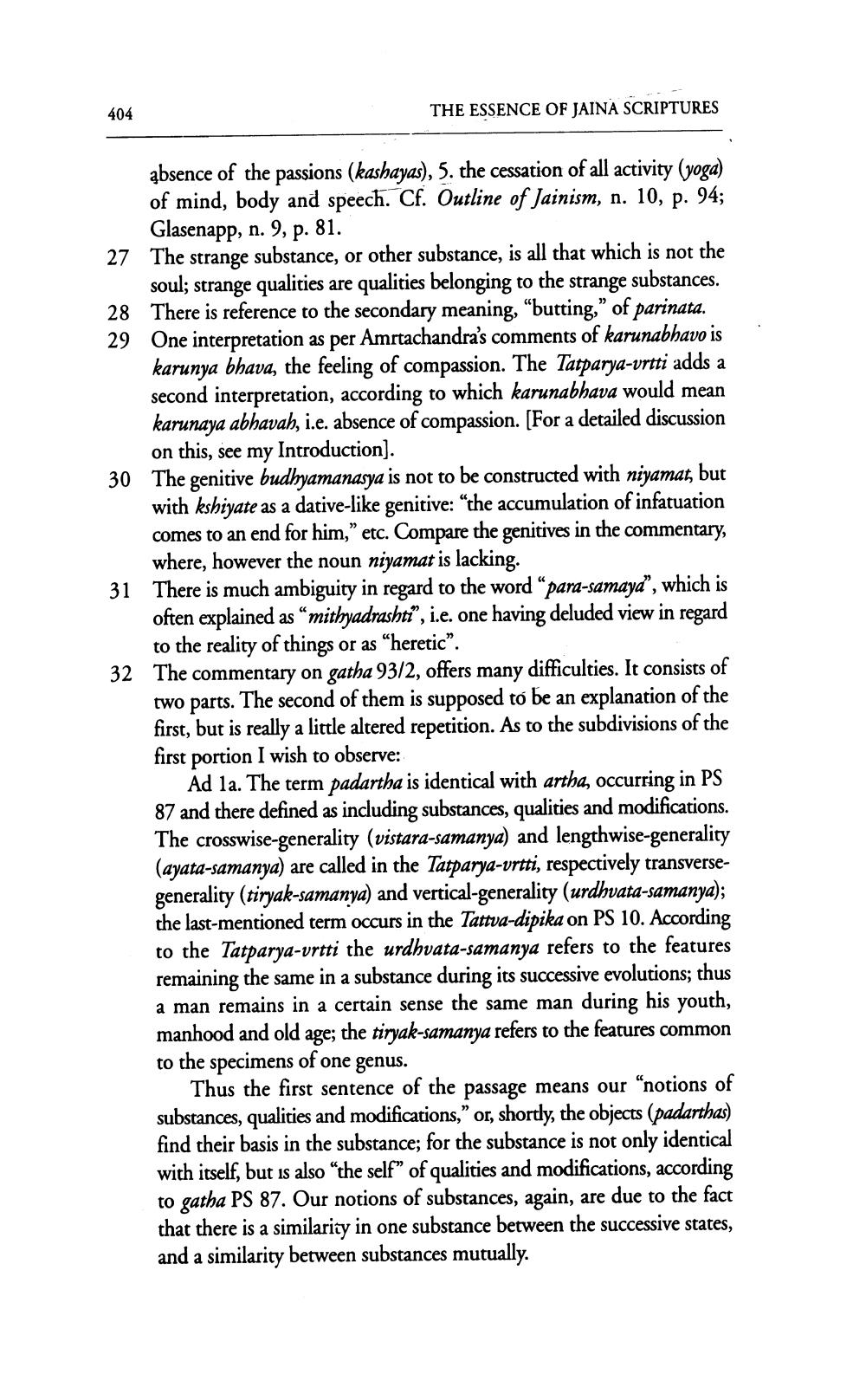________________
404
THE ESSENCE OF JAINA SCRIPTURES
absence of the passions (kashayas), 5. the cessation of all activity (yoga) of mind, body and speech. Cf. Outline of Jainism, n. 10, p. 94;
Glasenapp, n. 9, p. 81. 27. The strange substance, or other substance, is all that which is not the
soul; strange qualities are qualities belonging to the strange substances. 28 There is reference to the secondary meaning, “butting," of parinata.
One interpretation as per Amrtachandra's comments of karunabhavo is karunya bhava, the feeling of compassion. The Tatparya-vrtti adds a second interpretation, according to which karunabhava would mean karunaya abhavah, i.e. absence of compassion. (For a detailed discussion
on this, see my Introduction). 30 The genitive budhyamanasya is not to be constructed with niyamat, but
with kshiyate as a dative-like genitive: “the accumulation of infatuation comes to an end for him," etc. Compare the genitives in the commentary,
where, however the noun niyamat is lacking. 31 There is much ambiguity in regard to the word “para-samayd”, which is
often explained as “mithyadrashti”, i.e. one having deluded view in regard
to the reality of things or as “heretic”. 32 The commentary on gatha 93/2, offers many difficulties. It consists of
two parts. The second of them is supposed to be an explanation of the first, but is really a little altered repetition. As to the subdivisions of the first portion I wish to observe:
Ad la. The term padartha is identical with artha, occurring in PS 87 and there defined as including substances, qualities and modifications. The crosswise-generality (vistara-samanya) and lengthwise-generality (ayata-samanya) are called in the Tatparya-vrtti, respectively transversegenerality (tiryak-samanya) and vertical-generality (urdhvata-samanya); the last-mentioned term occurs in the Tattva-dipika on PS 10. According to the Tatparya-vrtti the urdhvata-samanya refers to the features remaining the same in a substance during its successive evolutions; thus a man remains in a certain sense the same man during his youth, manhood and old age; the tiryak-samanya refers to the features common to the specimens of one genus
Thus the first sentence of the passage means our "notions of substances, qualities and modifications," or, shortly, the objects (padarthas) find their basis in the substance; for the substance is not only identical with itself, but is also “the self” of qualities and modifications, according to gatha PS 87. Our notions of substances, again, are due to the fact that there is a similarity in one substance between the successive states, and a similarity between substances mutually




